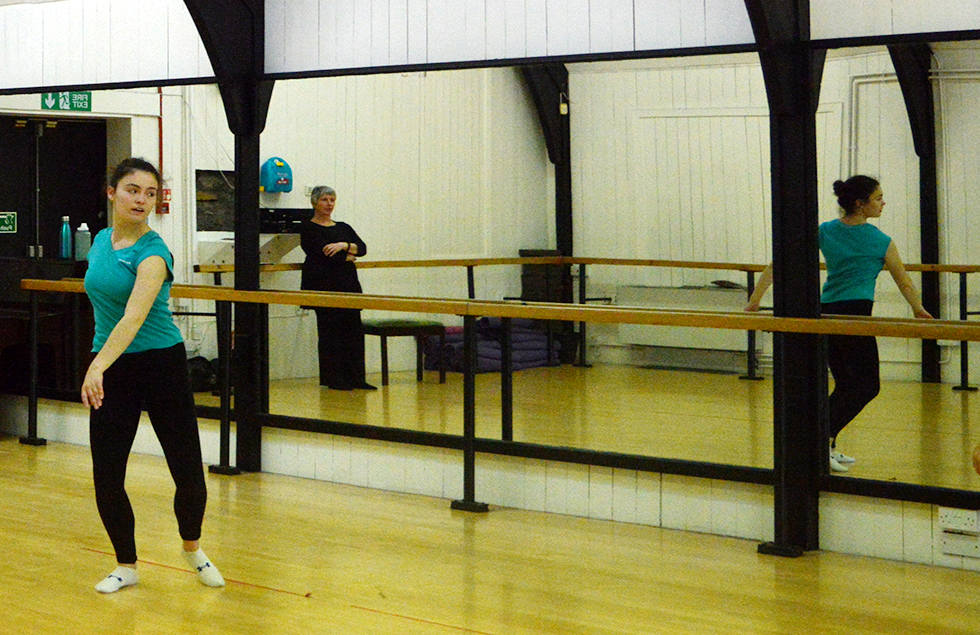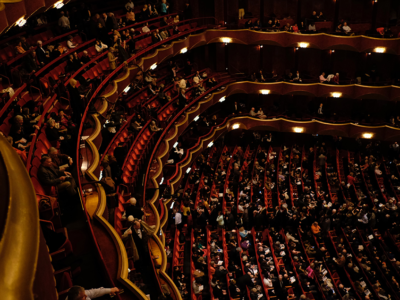Was nothing tried to improve Adamsdown’s cultural access?
It’s not fair to say that nothing was tried; however, nothing was tried with the right mindset. Looking for short-term effects, initiatives were quickly discouraged. Most of them failed, either because of a lack of funds or a lack of understanding of the community.
One of the most popular was the Community First programme, which included the STAR project. Splott, Tremorfa, Adamsdown and Roath were reunited under the STAR community hub. It was shut down in March 2018, to the regret of residents, as the STAR hub organised regular and accessible events.
Instead, the Communities for Work project was pursued, still hosted by the City Council, but focusing on offering help to find work in some of the most deprived areas.
To access art, people in Adamsdown still have to go to Roath, Cathays, or the city centre, and can rarely stay in their own community.
Isn’t it close enough?
This map pinpoints the most popular cultural locations in Cardiff, from museums to theatres and libraries. Apart from Rubicon Dance and NoFitCircus, none are in Adamsdown.
Most of them are quite close, some might argue. After all, depending on where you live in Adamsdown, the city centre can only be a 15-minute walk away. Not a catastrophic distance, but for some, whether you take into account the means, time or mobility issues, it is still not the most accessible.
Splott is the usual go-to for Adamsdown’s residents to quickly access cultural events or activities. With the STAR hub offering sports such as swimming or fitness classes, and the Oasis Centre proposing cultural and food-related events, Splott is slowly developing with a rather accessible offer.
Yet, Rabab Ghazoul, who has been developing cultural access on Riverside for a couple of years with organisation Gentle/Radical, strongly insists that it isn’t fair that some areas in Cardiff have to cross town, or leave their neighbourhood, to watch a movie or borrow a book.
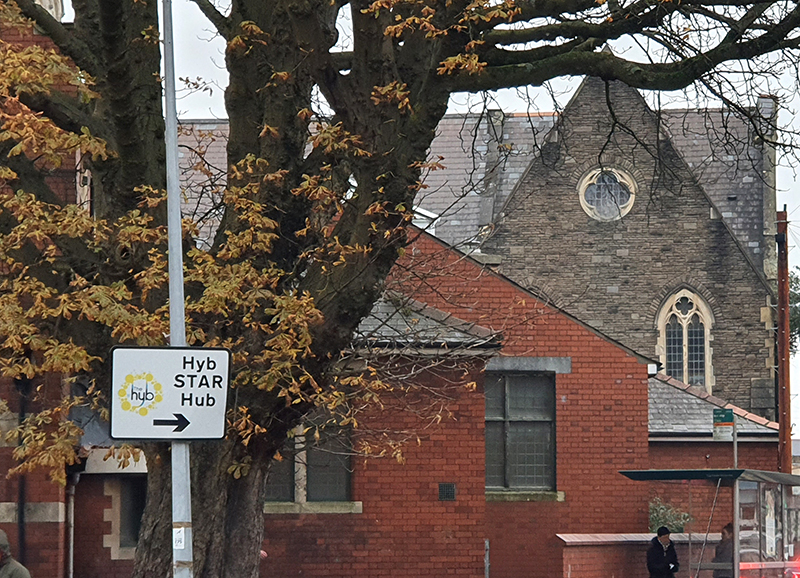
The STAR Hub sign stands in front of Roath Library as it is ideally located at the middle of the four areas, by Newport Road
What about community-based events?
Sarah Younan, resident of Adamsdown, is also an artist who gets involved in the arts sector. For her, there’s no question about the richness of the area in terms of cultural diversity – even if, yet again, not everything she recommends is based in Adamsdown.
“For people who want something more ratchet, there’s pole twisters and twerking classes in Splott. There’s African and Polish and Kurdish cafés and community hubs. The Ethiopian community church is here. Even the Oasis Centre occasionally do cultural nights. Splott Football Club is really close and they have amazing community spirit.”
Her last recommendation is the Trinity Centre, where NoFitState Circus made their nest. “There’s always stuff happening there,” she says with enthusiasm, “from disco boxercise to Ethiopian church services, community meetings and Sudanese parties.”
Not safe, not attractive, and a ‘tough’ place to be – this is still how Adamsdown is perceived. So how can culture bloom in this undesired and underserved area?
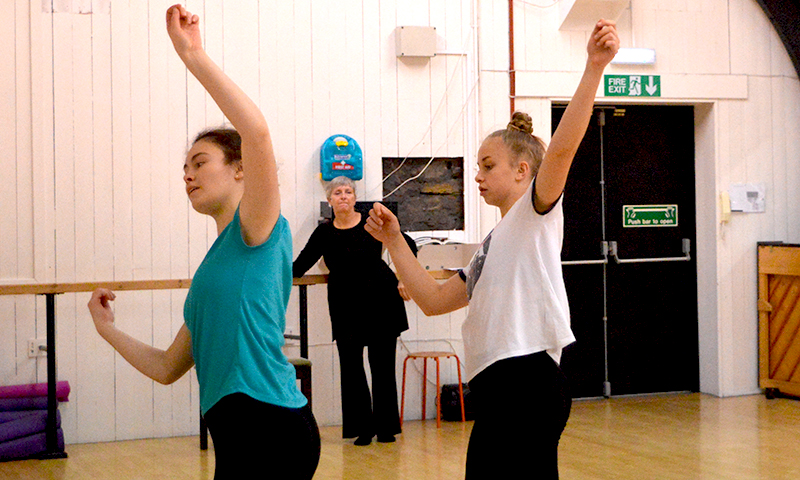
A jazzy tune echoes in the dance studio. When it turns into a waltz rhythm, the students suddenly raise their heads. Arms straight, they start moving; the studio becomes oddly silent, despite the music blaring out. Their professor is standing on the side, observing them. And, when the audio fades out, her comments snap out.
“Quite fascinating, isn’t it?,” whispers Adam Lloyd, coordinator of Rubicon Dance, a hot cuppa in hand. It is indeed fascinating, because of how unexpected it is to enjoy this art in the middle of Adamsdown.
The inclusive and affordable dance school unpacked on Nora Street more than 30 years ago. And with NoFit State Circus, they are the only recognised art bodies in Adamsdown.
An odd mixture of terraced houses, construction sites and brand-new accommodations, Adamsdown is not the obvious place for a night at the theatre. So when the Senedd’s Arts committee recommends that art bodies should create content within a community rather than drop in, it can be hard to see it implemented in the area.
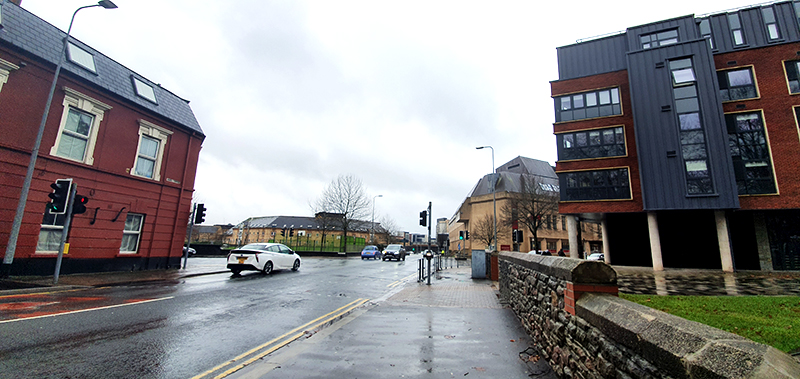
“I can see that if you were a start-up it would be tricky to settle in Adamsdown,” admits Adam, “because it is based on trust and an existing knowledge.” With over 30 years of building links with communities and local schools, Rubicon Dance’s trust is well-established.
Committing to community
“We tend to commit to communities,” explains Adam, “it goes beyond far better long-term, understanding relationships with others, than if you are just jumping into a community and doing a five-week session.”
Nurturing local access to culture is indispensable if Adamsdown wants to grow away from its deprived image. As Prof Morag McDermont writes in the Senedd’s report, “To enable people within their own community to be engaging in the cultural arts, to be using their own creativity… It’s making it possible for people to think, ‘Yes, this is something I could do.’”
“We tend to commit to communities; it goes beyond far better long-term relationships.”
Sarah Younan argues Adamsdown offers this cultural engagement. “As an immigrant,” the artist explains, “I see Adamsdown as a rich place where I know how to find the food, languages, music and social gatherings I enjoy.”
What Adamsdown lacks in mainstream culture, it weighs in with one built on its multiculturalism. She suggests from African, Polish and Kurdish cafés to cultural nights at the Oasis Centre. Sarah confirms, “To me, there’s more here than at the Millenium Centre.”
And yet, Adamsdown lacks one of the simplest ways of engaging with the arts: a library.
#RoathLibrary closed a yr ago today. 1000+ petition sigs. 3-4k visits per month. 10000 books pulped. #SaveLibraries pic.twitter.com/VeYaQhz2qA
— saveroathlibrary (@OurRoathLibrary) November 7, 2015
A year after the first closure of Roath Library in 2014, activists were still hoping for the library to be saved
An hour’s walk to read a book
Adam grew up in Cardiff; Roath Library had always been part of his life. So when it closed in 2014 for maintenance, and definitely shut down in 2015, it was a strange moment for the area. Where would they go to grab a book?
The interest was high when, in 2017, residents were consulted about a new facility to be opened in the Chapel of Cardiff Royal Infirmary. “There is a lot of calls in the area for these facilities,” highlights the report. With the conversion plans approved in June 2018, works were to be done by Autumn 2018. Yet, a year later, the project is still in the development stage.
Absolutely delighted that we’ve just been awarded Welsh Government ICF Capital funding to redevelop the Chapel at CRI into the heart of our health & wellbeing centre – we will transform it into a cafe/information centre/library with meeting rooms @CV_ihscpship @CV_UHB
— Abigail Harris (@abisimonharris) October 9, 2019
This tweet by, Abigail Harris, executive director of strategic planning of Cardiff and Vale University Health Board, shows the project is still in planning: they will transform it
To access a library, Adamsdown residents are given alternative options by the City Council. The first is Penylan Library, about 30 minutes away, and the journey doesn’t decrease when using public transport. When in 2015, 40,8% of households were below 60% of Britain’s median income, it is unlikely that Adamsdown residents have the means or time to take an hour to reach the closest resort.
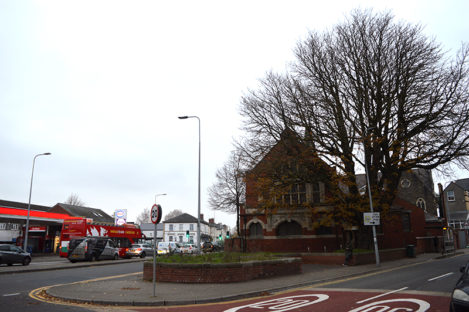
At the corner of Newport Road, 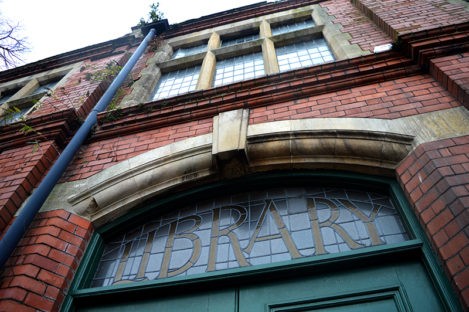
stands Roath Library, 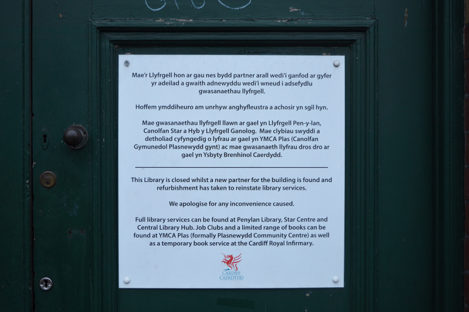
where a sign redirects residents to other librairies
Adam confirms that residents want more space and more access. Cardiff South East residents were the least satisfied in 2016 with their access to “opportunities that help them achieve their full potential.” If no public bodies are going to change this, the community might as well strive on its own.
With the expansion, Rubicon Dance is hoping to do just that.
The renewal of Adamsdown
Currently raising £2 million to transform Roath Library into dance studios, the team is excited about their future in Adamsdown. Support from the community is overwhelmingly high, says Millie Bethil, a creative intern with the fundraising team.
“This doesn’t change the fact that people still deserve somewhere to come.”
It was obvious they should remain in Adamsdown, she adds, despite the difficulties. Adam makes a knowing face, and confirms. With more than 15 criminal offences against the person and more than 25 complaints for antisocial behaviours registered in 2015-2016, Adamsdown is one of the most dangerous areas in the city.
“There’s car crash, there’s dealing… But nothing dreadful has happened,” Adam nods, before promptly touching wood.
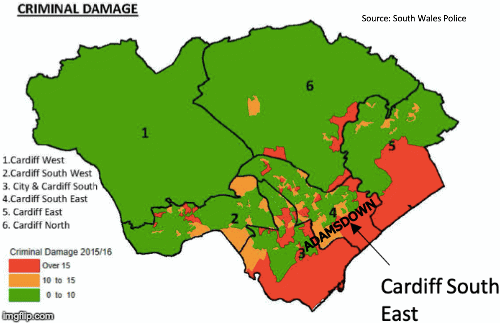
“The easy thing to think is ‘ah, I wish we were somewhere posh’,” admits Adam, “but we’d be wrong to abandon this community after so, so long.” Nodding, Millie adds, “It doesn’t change the fact that people in Adamsdown still deserve somewhere to come.”
With the new Roath Library, they hope to give residents more than ‘somewhere to come’.
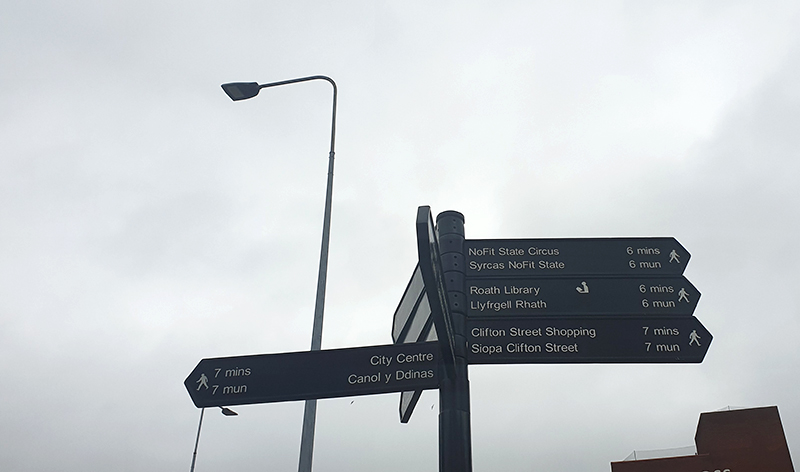
“We’d have space to host events for Cardiff’s Dance Festival,” beams Adam. He explains that the festival reunites artists from all over the world. Their studio project would symbolise renewal for Adamsdown, slowly erasing its culturally deprived image as more events could be developed.
It might not be so odd, then, to head to Adamsdown for an evening full of artistic performances. And as Kathy’s Waltz still echoes in the background, Adam glances at Millie with a determined smile, “If we do it right, Roath Library will become a proper landmark building.”
Was nothing tried to improve Adamsdown’s cultural access?
It’s not fair to say that nothing was tried; however, nothing was tried with the right mindset. Looking for short-term effects, initiatives were quickly discouraged. Most of them failed, either because of a lack of funds or a lack of understanding of the community.
One of the most popular was the Community First programme, which included the STAR project. Splott, Tremorfa, Adamsdown and Roath were reunited under the STAR community hub. It was shut down in March 2018, to the regret of residents, as the STAR hub organised regular and accessible events.
Instead, the Communities for Work project was pursued, still hosted by the City Council, but focusing on offering help to find work in some of the most deprived areas.
To access art, people in Adamsdown still have to go to Roath, Cathays, or the city centre, and can rarely stay in their own community.
Isn’t it close enough?
This map pinpoints the most popular cultural locations in Cardiff, from museums to theatres and libraries. Apart from Rubicon Dance and NoFitCircus, none are in Adamsdown.
Most of them are quite close, some might argue. After all, depending on where you live in Adamsdown, the city centre can only be a 15-minute walk away. Not a catastrophic distance, but for some, whether you take into account the means, time or mobility issues, it is still not the most accessible.
Splott is the usual go-to for Adamsdown’s residents to quickly access cultural events or activities. With the STAR hub offering sports such as swimming or fitness classes, and the Oasis Centre proposing cultural and food-related events, Splott is slowly developing with a rather accessible offer.
Yet, Rabab Ghazoul, who has been developing cultural access on Riverside for a couple of years with organisation Gentle/Radical, strongly insists that it isn’t fair that some areas in Cardiff have to cross town, or leave their neighbourhood, to watch a movie or borrow a book.

The STAR Hub sign stands in front of Roath Library as it is ideally located at the middle of the four areas, by Newport Road
What about community-based events?
Sarah Younan, resident of Adamsdown, is also an artist who gets involved in the arts sector. For her, there’s no question about the richness of the area in terms of cultural diversity – even if, yet again, not everything she recommends is based in Adamsdown.
“For people who want something more ratchet, there’s pole twisters and twerking classes in Splott. There’s African and Polish and Kurdish cafés and community hubs. The Ethiopian community church is here. Even the Oasis Centre occasionally do cultural nights. Splott Football Club is really close and they have amazing community spirit.”
Her last recommendation is the Trinity Centre, where NoFitState Circus made their nest. “There’s always stuff happening there,” she says with enthusiasm, “from disco boxercise to Ethiopian church services, community meetings and Sudanese parties.”

